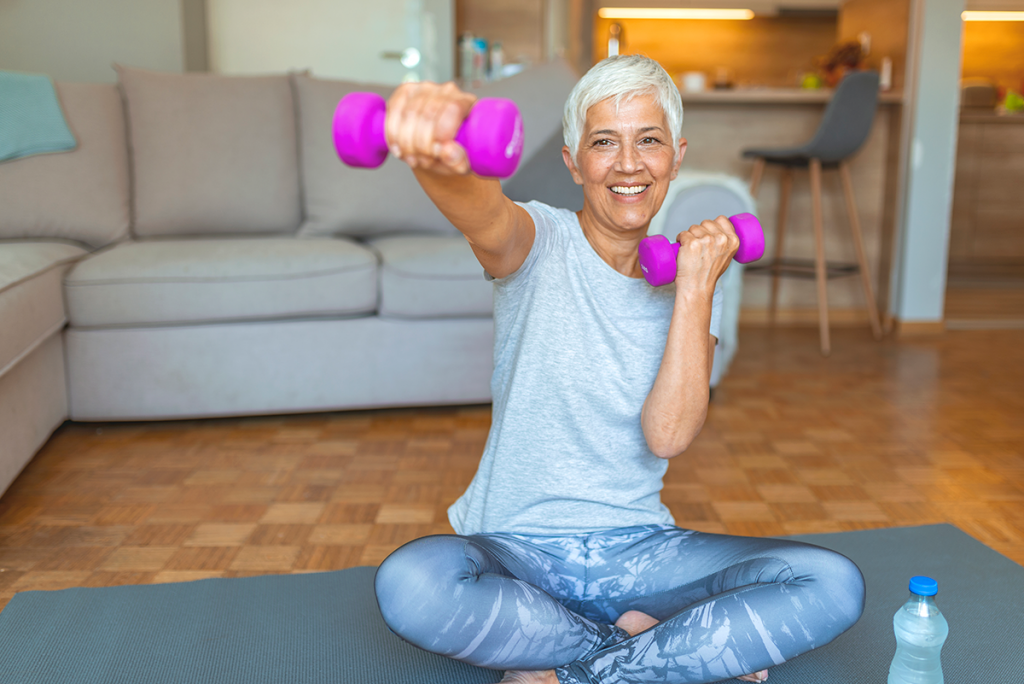The Perfect Pandemic Storm?
The average weight gain during the pandemic was 1.5 pounds per month, according to a recent study in the Journal of the American Medical Association. As of May 2021, that’s 20 lbs. The results were gathered by monitoring smart scale users with Bluetooth technology. Subjects were male and female smart scale owners with a mean age of 51.
What Happened?
Shelter in place (SIP) orders combined with stockpiles of pantry items, ample take-out and door-to-door delivery. Additionally, many found themselves with either a household of varied food wants and needs, serving up a daily meal dilemma, or in isolation lending to depression and anxiety. Neither scenario made it easy to adopt or stick to routine healthy dietary habits.
Researcher Suggestions
From the results, researchers suggest a need to mitigate our present post-pandemic conditions with dietary interventions and physical activity.

As aforementioned, the study included both men and women. Women at age 51, however, have another challenge. Women reach menopause at the average age of 51.3. During the latter stages of perimenopause and early postmenopause, there is an accelerated rate of loss of both muscle and bone. The loss is experienced when there is a sharp decline of estrogen and a corresponding increase of cortisol.
Show Me the Muscle
While average weight gain was the reported data in this study, changes in body composition weren’t included. This author suggests we may safely assume this was fat weight and not muscle. There is a need for both exercise and nutrition interventions.
There is also a potential need to identify solutions to sleep disruption and stress (as cortisol can have a negative impact on fat storage and muscle breakdown). Sleep disruption is common for women in menopause and often accompanies stress or anxiety, of which the pandemic provided an abundance.
Hormonal Contributing Factors
Testosterone and growth hormone also decline with age and levels will suffer more in women who experience unresolved insomnia during menopause. These two hormones are produced in the greatest amounts during deep sleep cycles, which menopausal women may reach with less frequency or for shorter durations.
Women who were in late-stage perimenopause, early-stage post menopause window during the pandemic have the greatest potential for devastating disability. This is especially true if they weren’t strength training with adequate intensity. We may see these effects in a decade if losses of muscle and bone are not mitigated.
Sarcopenia, a significant loss of muscle and strength, is experienced by 42% of women by the time they reach 65. This is true in normal times, without a 14+ month decrease in adequate exercise stimulus. Sarcopenia results in frailty, greater risk of falls, and with bone loss also occurring at accelerated rates during menopause, fracture risk is higher.
Compounding Problems
Pre-existing obesity or that stemming from weight gain during the pandemic coupled with sarcopenia provides an even more severe condition known as sarcopenic obesity. Both obesity and sarcopenia are independent risks for disability. In adults diagnosed with both, there is a 2.5-fold increased risk of disability.
Inadequate Stimulus
When hormone levels offered a stimulus for muscle decline, there must be some other stimulus to replace it.
Remember the shortage of dumbbells early in the pandemic? While Peleton sales skyrocketed and walking increased for many, access to the type of anaerobic strength training that has the biggest pro-aging benefits for women in midlife required creativity. For those not familiar with strength training, or not online due to connectivity or comfort, muscle and bone loss awareness and solutions are warranted.
The Perfect Storm for Fitness Professionals
For personal trainers and fitness pros, this truly is a perfect storm. It’s an opportunity for a legacy of impact on a female demographic that touches three generations. Her young adult children, friends and life partners, and parents & in-laws. Household decisions and health habits are influenced most by her. No one else has as much influence on health as she does.
The unnecessary devastating disability that could result for those who’ve gained and sustained significant weight during the pandemic can be avoided. Fitness pros who take proactive measures to educate, publicize, and offer positive solutions for behavior change can be a part of reversing this significant health risk.
Debra Atkinson is the #youstillgotitgirl who is flipping 50 and changing the way thousands of women think about their second half. She’s the host of the Flipping 50 TV Show and the Flipping 50 podcast. As a master personal trainer, strength and wellness coach with over 30 years fitness industry experience, she works with women who are pro-aging with vitality and energy. She serves on the MedFit Education Foundation Advisory Board, is an international fitness presenter, and author of hundreds of articles and multiple books. Visit her website, flippingfifty.com
References
- Lin AL, Vittinghoff E, Olgin JE, Pletcher MJ, Marcus GM. Body Weight Changes During Pandemic-Related Shelter-in-Place in a Longitudinal Cohort Study. JAMA Netw Open. 2021;4(3):e212536. doi:10.1001/jamanetworkopen.2021.2536
- Front. Endocrinol., 21 May 2020 | https://doi.org/10.3389/fendo.2020.00332

